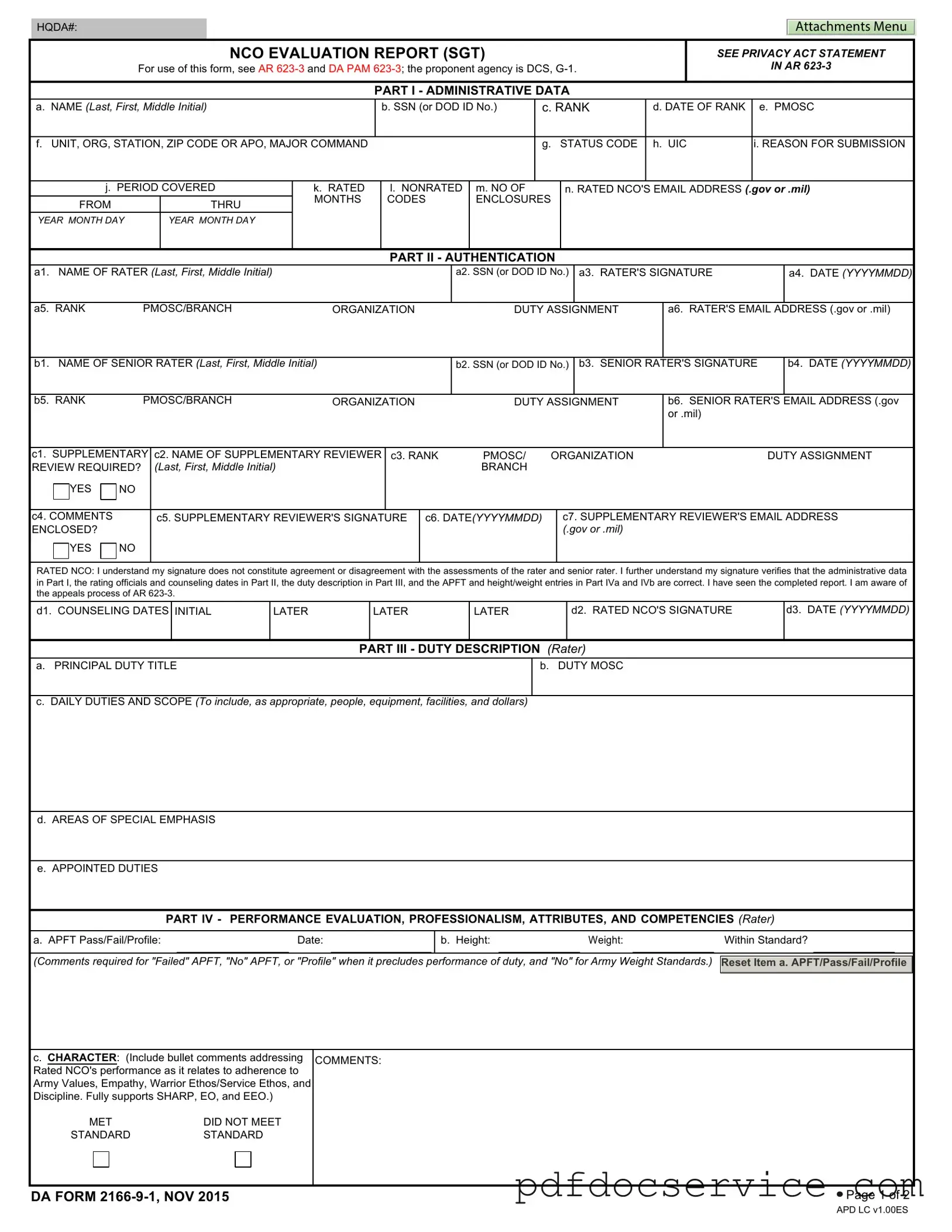The DA 2166-9-1 form is an NCO Evaluation Report specifically designed for Sergeants. It serves to evaluate the performance and potential of non-commissioned officers in the Army. This evaluation is crucial for career progression, promotions, and assignments. It provides a comprehensive overview of an NCO’s duties, responsibilities, and achievements over a specific period.
This form must be completed by the rater, who is typically the immediate supervisor of the rated NCO. Additionally, a senior rater, usually a higher-ranking officer, will also review and sign the report. The rated NCO themselves must acknowledge the report by signing it, ensuring that they are aware of the contents and the evaluation process.
Part I includes essential administrative data about the rated NCO. This section captures:
-
Name (Last, First, Middle Initial)
-
Social Security Number or DOD ID Number
-
Rank and Date of Rank
-
Unit, Organization, and Station Information
-
Period covered by the evaluation
-
Rated NCO's email address
This information ensures that the evaluation is correctly attributed and provides context for the performance assessment.
How does the evaluation process work?
The evaluation process begins with the rater completing the evaluation based on the NCO's performance during the specified period. The rater assesses various attributes such as character, presence, intellect, leadership, development, and achievement. After the rater completes their assessment, the senior rater reviews it, providing an additional layer of evaluation. Finally, the rated NCO signs the form, acknowledging their awareness of the evaluation without necessarily agreeing with all assessments.
What happens if the rated NCO disagrees with the evaluation?
If the rated NCO disagrees with the evaluation, they can follow the appeals process outlined in AR 623-3. This process allows them to formally contest the evaluation, ensuring that their concerns are heard. It’s important for NCOs to understand this process, as it provides a way to address any perceived inaccuracies or unfair assessments in their evaluations.
Yes, there are privacy considerations. The DA 2166-9-1 form contains sensitive personal information, such as Social Security Numbers and other identifying details. It is essential to handle this form with care, following the guidelines set forth in the Privacy Act Statement found in AR 623-3. This ensures that the information is protected and used only for its intended purpose.
